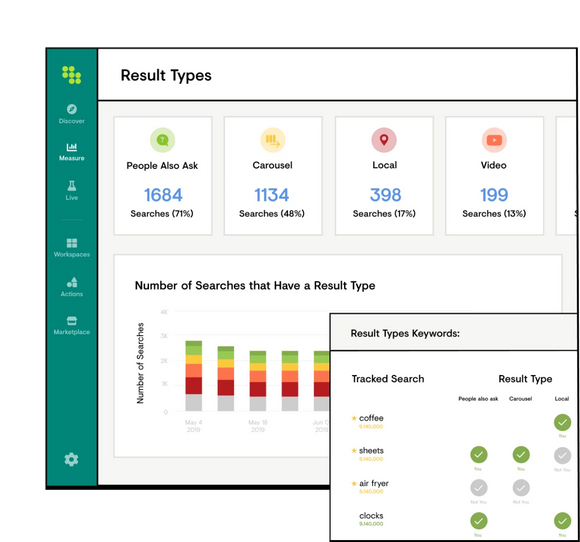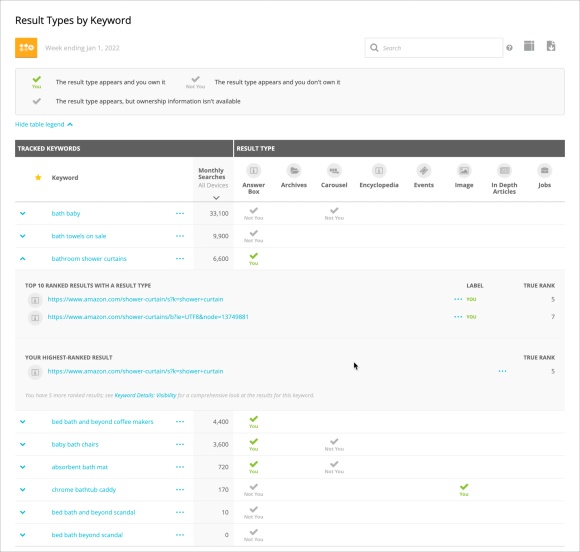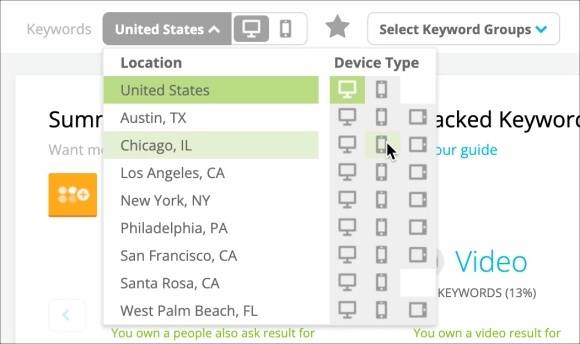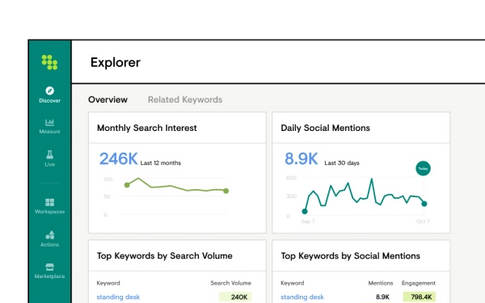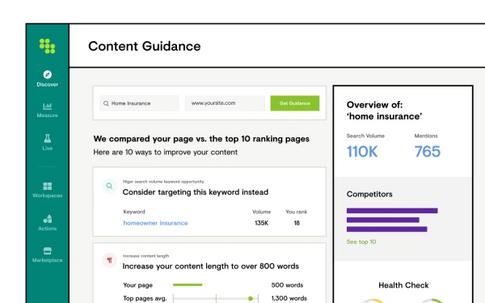Result Types
Win the top spots on Google
Find opportunities for content creation with the Result Types report. See a visualization of the different universal result types that appear for the searches you care about most.



Score the most important spots on the SERP
Learn which result types, like images, videos, tweets, and answer boxes, appear for high-value keywords.
Discover new content opportunities
Identify opportunities to create content that competes with universal result types.
Compete across different devices and locations
Get insights about your searches for different locations and devices so you're always one step ahead.
I often can pull insights from Conductor to share with our VP on how our SEO is performing and when we win new answer boxes.
